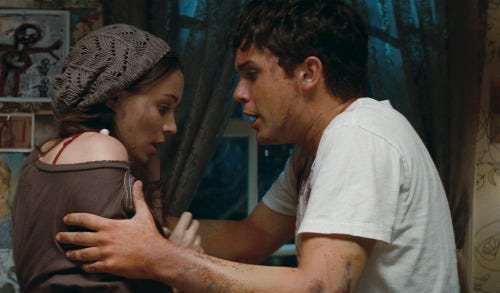A Nightmare on Elm Street

When cinephiles decry the remaking of some of their favorite movies, they have a lot of examples to argue against the practice.
"Psycho" is one. "Planet of the Apes" is another. "The Texas Chainsaw Massacre" is another.
"A Nightmare on Elm Street" is another.
For all the fans who held out hope that maybe, perhaps, someone would take that classic little low budget yarn that spawned seemingly a trillion increasingly bad (but always fun) sequels and coax a real classic remake out of it, can now let out a little sigh of disappointment, because they didn't.
I was one of those, hoping that Freddy in the hands of Jackie Earle Haley ("Watchmen") would turn out well, would take the incredibly imaginative nugget of an idea Wes Craven unleashed upon the world in 1984 and make a really hardcore, scary remake, that would make me afraid again to fall asleep.
Instead, I just get another chance to say utter those 5 most maligned and oft-repeated words of the fanboy community, "Michael Bay raped my childhood."
Because, yes, it is Bay's Platinum Dunes production company that made "Nightmare" in all it's crappy glory, hiring Samuel Bayer, who has a lot of music video credits on imdb but apparently had never seen the original "Nightmare," but maybe caught the trailer on YouTube after he got the job.
The story is more or less identical to the original, and a few scenes are aped from it, but there's little else as far as comparisons go.
The story: teenagers on Elm Street find themselves menaced by the razor-fingered Freddy Kruger while they sleep in a series of nightmares that get progressively more intense, and the injuries they receive while they're asleep actually injures their physical bodies.
When some of the teens start dying, some of them start to ask questions that their parents don't seem too keen on answering.
Screenwriters Wesley Strick and Eric Heisser for whatever reason wanted to interject a bit of cockamamie "The Ring"-style doubt as to the villain's motives (at one point calling into question as to what Freddy did leading up to his death at the hands of angry parents), and that's but the least of their transgressions against the character.
Random memorable bits are tossed in seemingly at random, at times assigned to different characters: the character that corresponds with Tina in the original now gets the classroom dream; Freddy utters the famous "I'm your boyfriend now" line in person to Nancy rather than over the tongue-phone; the Glenn character gets a bit more to do than play the disbelieving boyfriend, but give me Johnny Depp's skeptical beau over Kyle Gallner's blank stares any day . There are others, but the critics' code of not spoiling things too much prevents me from speaking further.
So a lot of the same things happen, but seeing it is more like listening to That Guy Who Can't Tell Jokes Right explain it to you.
And why does Bayer need to let fly with a stream of sparks every time Freddy scrapes those nails on something? That shrill squeal is one of the iconic sounds of 80s slasher films; why turn it into a dull scrape?
And here is rule number one for modern horror: do not ever (EVER) use CGI in place of practical effects. If Tom Savini and George Romero have taught us anything, it's that practical gore effects can be done cheaply and effectively. CG sucks for horror. Every CG shot in this film is inferior to the practical stuff Craven did 25 years ago or so on a fraction of the budget (except the classroom dream sequence, which did at least look good).
No one in Hollywood has ever produced a good, believable horror film employing CGI over practical gore effects. I dare you to prove me wrong.
When you're watching a horror film made in the past 10 years or so, you can pretty much tell from the first scare if the movie is going to be good or not. If you get a rather pedestrian, predictable scare accompanied by the super loud, banging music cue rather than real tension, you can conclude immediately that a) the filmmaker doesn't know what he/she is doing, and b) things will only get worse.
Yes, "Nightmare" does this too. Every time. Yes, it makes us jump, but it's not because of the movie's effectiveness, it's because that loud, sudden aural jolt surprises us. It's lame, and it only takes us out of the movie. Cut it out, Hollywood.
So yes, assign this one to the cinematic scrap heap of clunky, crappy, worthless remakes. But it'll no doubt make bank this weekend, which will have Michael Bay wringing his hands, stained in the blood of my adolescence, before he presses the button to greenlight "A Nightmare on Elm Street 2."


